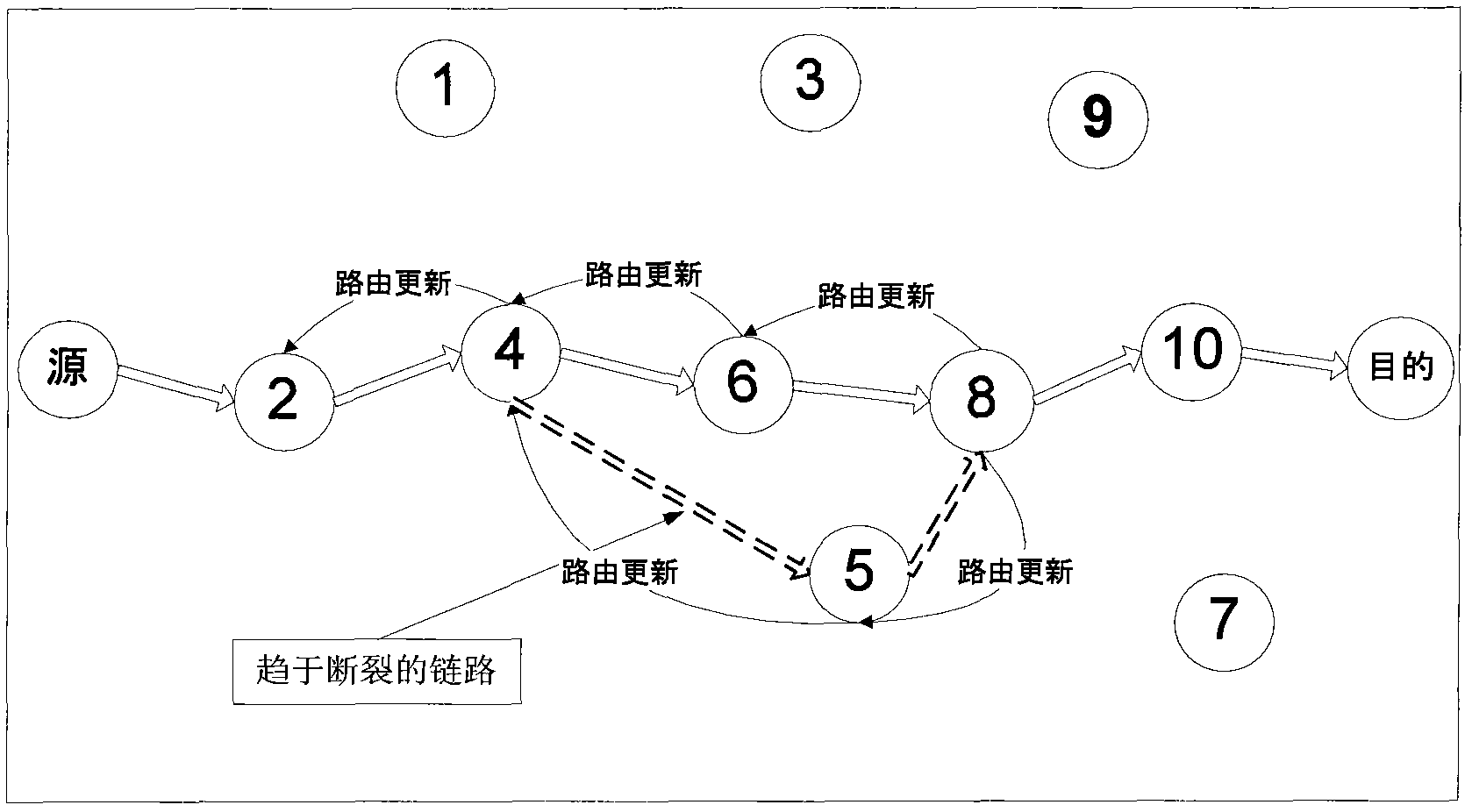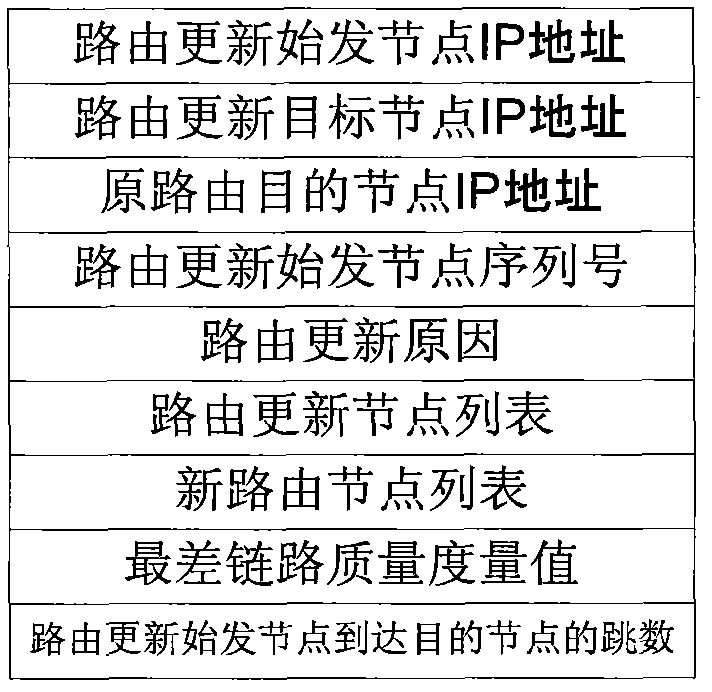Locking route method used for wireless multi-hop network
A wireless multi-hop network and routing technology, applied in the field of wireless sensor networks, can solve the problems of high network resource overhead, affecting communication, and large network resources, and achieve the goals of extending the use time limit, reducing network overhead, and enhancing scalability Effect
- Summary
- Abstract
- Description
- Claims
- Application Information
AI Technical Summary
Problems solved by technology
Method used
Image
Examples
specific Embodiment
[0052] 1) A specific implementation example of the locking routing method based on next hop routing is as follows:
[0053] 1.1) Route discovery: The source node first sends a route request to the destination node by flooding. After receiving the routing response returned by unicast, the source node sends the data packet to the destination node according to the discovered routing path. When the destination node receives the first packet, it periodically sends Hello packets (in this example, the period is set to 1 second).
[0054] 1.2) Neighbor relationship establishment: The network nodes around the routing path judge whether they are the source node, the path node, or the neighbor of the destination node by eavesdropping on the data packet and listening to the Hello packet; by eavesdropping on the data packet, according to the data packet The source node and the destination node in the router to determine whether they are neighbor nodes of the routing path. The validity of the ...
PUM
 Login to View More
Login to View More Abstract
Description
Claims
Application Information
 Login to View More
Login to View More - R&D
- Intellectual Property
- Life Sciences
- Materials
- Tech Scout
- Unparalleled Data Quality
- Higher Quality Content
- 60% Fewer Hallucinations
Browse by: Latest US Patents, China's latest patents, Technical Efficacy Thesaurus, Application Domain, Technology Topic, Popular Technical Reports.
© 2025 PatSnap. All rights reserved.Legal|Privacy policy|Modern Slavery Act Transparency Statement|Sitemap|About US| Contact US: help@patsnap.com



